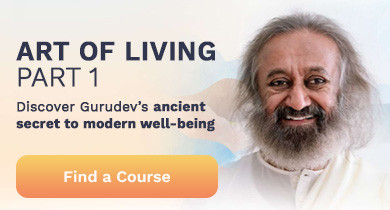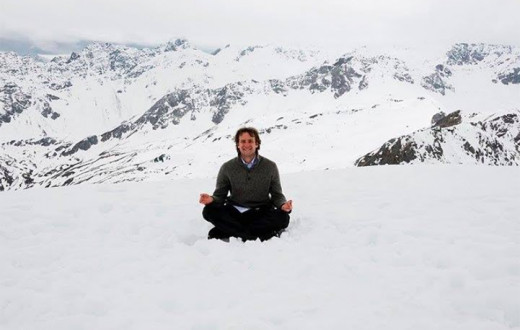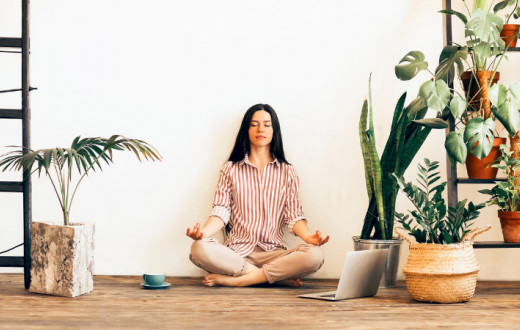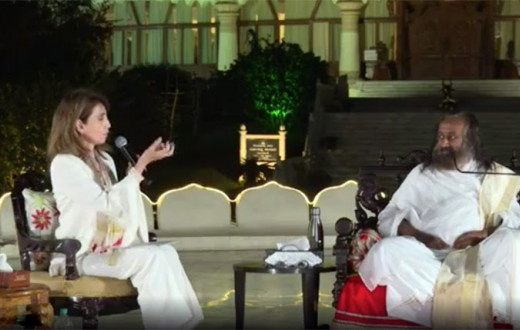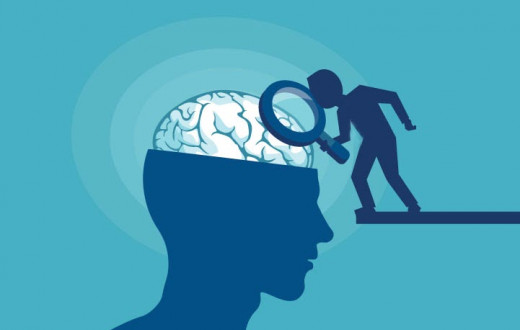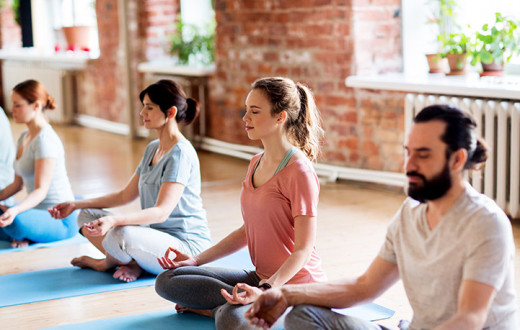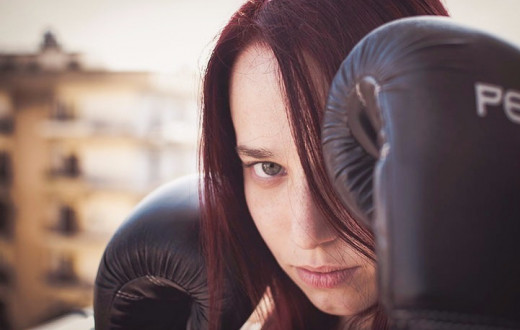By Jade Doherty
Struggling with mindful meditation? Try breath-based meditation to take your meditation and life to the next level
These days, it seems like everyone and their mother are extolling the virtues of meditation. Be it the CEO who practices mindful meditation before heading into work, the stressed-out mom who practices Buddhist meditation while the kids are napping, or the college student who turns on a guided meditation before they go to sleep.
Everyone is meditating.
There are so many meditation classes, apps, even meditation challenges! Competitive meditation?
Despite so much talk about meditation, it can be difficult to know which style to choose. Your friend observes their breath, another visualizes white light, another observes their thoughts.
Today, we will talk a little about different styles of meditation, and how to choose one that works for you.
What is meditation?
Gurudev Sri Sri Ravi Shankar defines meditation as “the delicate art of doing nothing and letting go of all the efforts to relax into your true nature which is love, joy, and peace”.
This is so beautiful!
There are many techniques people practice, and in some ways it's easier to talk about the benefits of meditation - stress and anxiety reduction, increased awareness, more focus, and being more in the present moment - than perhaps it is to define meditation!
For most people, when they think of meditation, their mind probably goes to someone seated on a cushion, with their palms on their knees, or folded in their lap. We know what meditation "looks" like, but it's harder to say what's going on inside for the practitioner. What are they doing? What are they feeling? Are they sitting there with a totally empty mind, are they experiencing inner bliss?
There are many different meditation techniques that are used and practiced across different traditions. Some techniques will involve breathwork, or visualizations, while others will be more about focus or light attention on a sound or mantra.
From Zen Buddhism to Hatha Yoga, to modern mindfulness, to vipassana retreats, there are a variety of approaches to meditation.
A few commonalities that most traditions share when it comes to meditation include observing your thoughts, and focusing your mind on something else. Meaning that you let your thoughts come and go, but don’t get attached to them, and give your mind something else to focus on, be it your breath, a mantra, or an image.
By doing this you become less attached to your thoughts, they feel more like clouds passing through the sky, rather than something you must converse with. And, by focusing your mind on something else, you become better able to focus.
So, it would depend on who you ask! Ask a Buddhist and they'll tell you it's silent sitting, ask a yogi and they'll tell you it's a single-pointed focus.
What is mindful meditation?
Mindful meditation has gained popularity recently, as has the idea of mindfulness in general.
Mindfulness meditation aims to make the practitioner more aware, or mindful, of their thoughts, and by extension the external world as they go about their lives. Typically you sit, and observe, starting with the breath, and then observing your thoughts.
Allowing them to come and go, but not getting too involved in any of them. A thought comes, you acknowledge it, and let it be.
By doing this, you start to be less bothered by your mind. You're better able to observe, and this begins to translate into life. You think a thought, or experience and emotion, and rather than getting affected by it, you can let it go.
But it's hard!
Many people find mindful meditation quite difficult. Sitting and observing every thought can be a real challenge. And then, when you find it hard, you stop doing it.
Meditation becomes a chore, or even worse, something else to be stressed and anxious about! You feel bad because you haven't done your practice! Rather than having a busy mind standing up, you now have a busy mind while sitting down. Success?
For many people, the piece that's missing is the breath. The breath is actually one of the most powerful tools you have to not only improve the enjoyment of meditating but also to change your life!
To go back to Patanjali and his 8 limbs of yoga, pranayama AKA breath control, is an important, but often overlooked preparation for meditation.
What is pranayama and how does it work?
Prana means breath or life force, and Yama means to control. So pranayama means to control the breath. You might have already heard of some pranayama techniques, like kapalbhati, bhastrika, or ujjayi breath if you practice yoga.
Breathing techniques are able to work with your system on a physiological and mental level.
While mindfulness is all about the mind, breathing techniques work with your body, internal systems (like the nervous system), and the mind, creating deep and long lasting well-being, health, and happiness.
Every emotion has a corresponding breath pattern, and by reverse engineering this we can create better experiences. Rather than trying to feel happy, you can breathe happy!
Working with the breath has so many benefits.
It deepens your meditation, by preparing your mind and body for meditation. So rather than jumping in cold and having all these thoughts, you prepare yourself through breathing techniques and effortlessly experience deep meditation.
It also starts to change the way you feel. You can read more about the science here, and here but the short version is that breathing techniques can reduce stress, anxiety, even PTSD, as well as physical benefits like reducing high blood pressure.
The breath is like the key to unlock deeper states of meditation, enjoy greater physical well-being, and naturally experience greater awareness and mindfulness.
How can I learn breath-based meditation?
Gurudev Sri Sri Ravi Shankar created SKY Breath Meditation, designed to give you everything you need to deepen your meditation practice, increase your mental, physical, and emotional well-being, and help you to be happier and more fulfilled.
Our expert instructors teach you all the techniques you need to be more mindful, enjoy your meditation practice, and change the quality of your life!
To help you get started, we are excited to invite you to join Beyond Breath and experience these techniques for free.
Beyond Breath is an online class, where an instructor will guide you through a breathing technique, and introduce you to the benefits of breath-based meditation.
So, if you've been struggling to meditate, or feel like you've reached a plateau in your current practice, join us for free and discover the power of your breath!
Jade Doherty is a freelance copywriter, meditator, and traveler, who is currently exploring and learning to surf in Goa, India.
